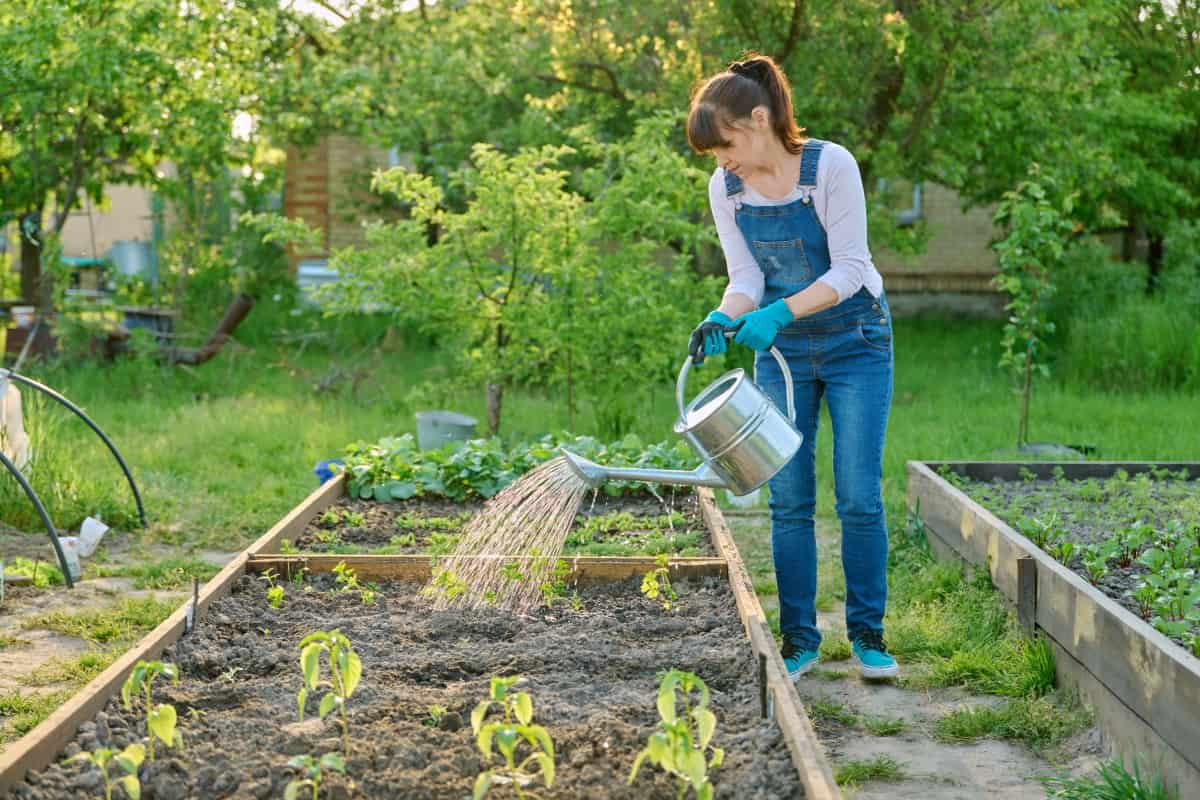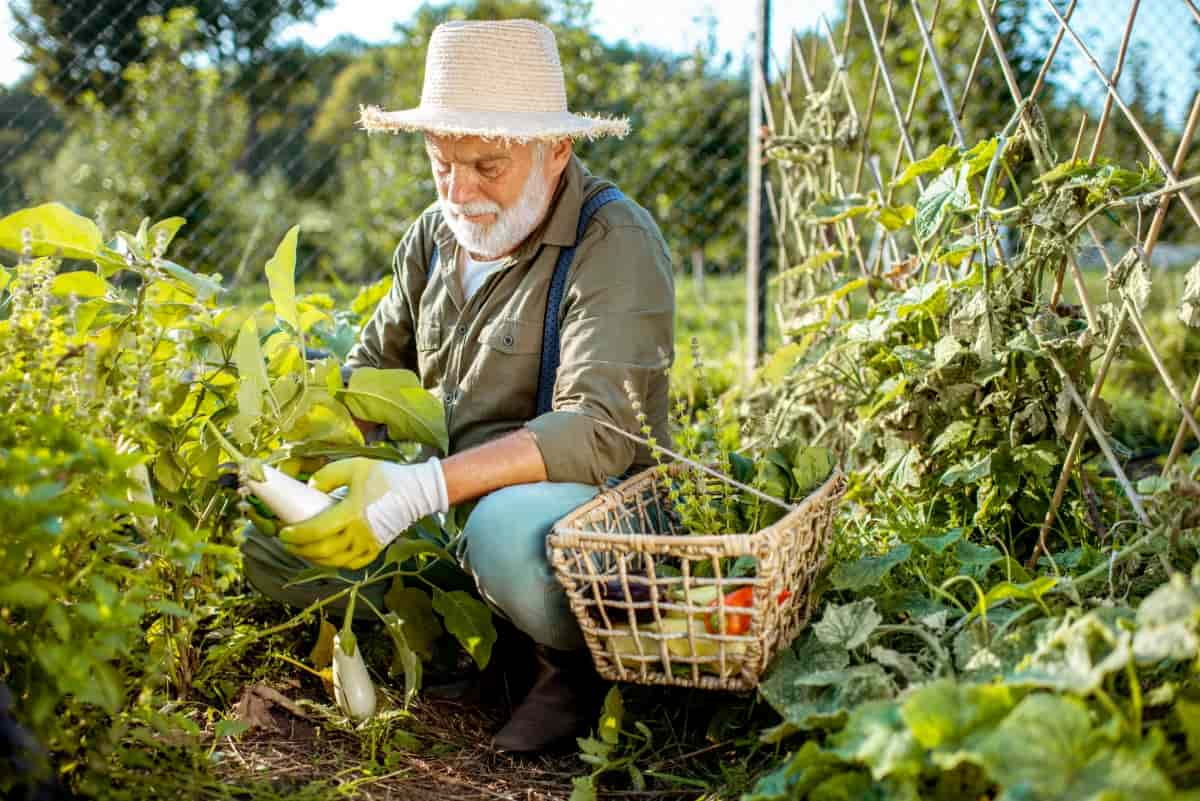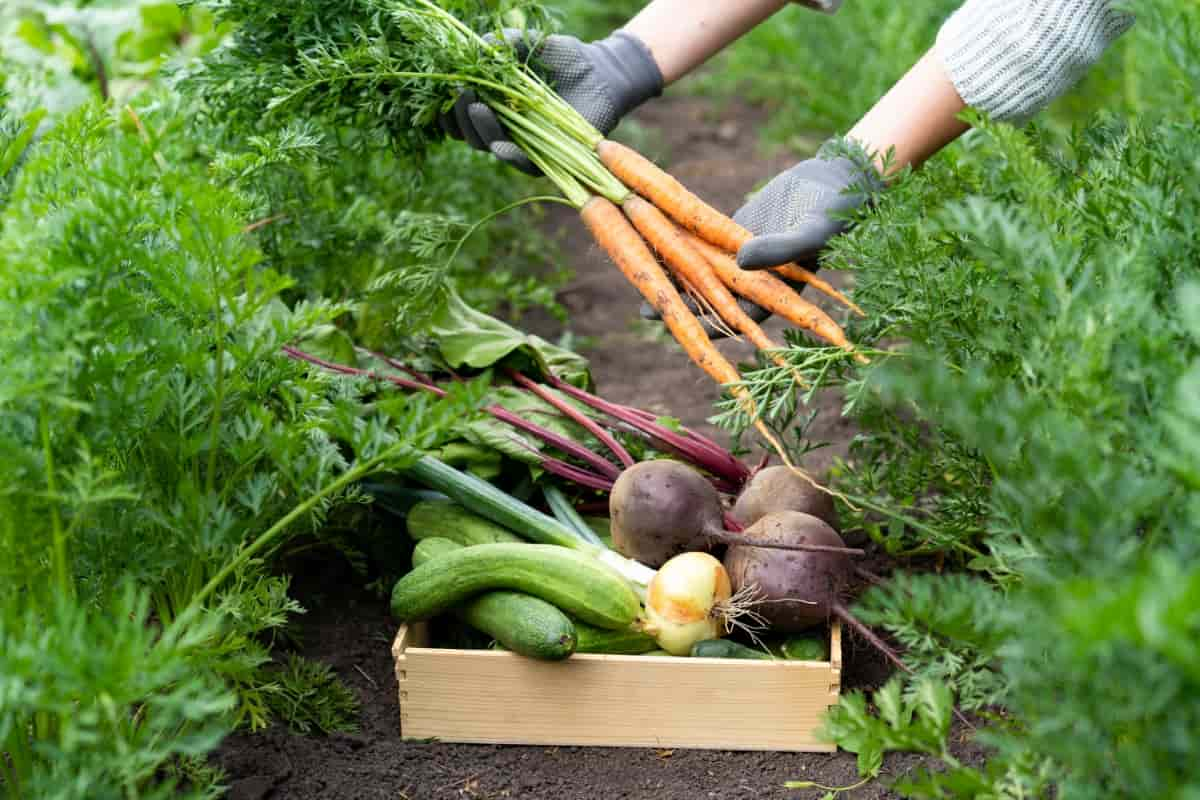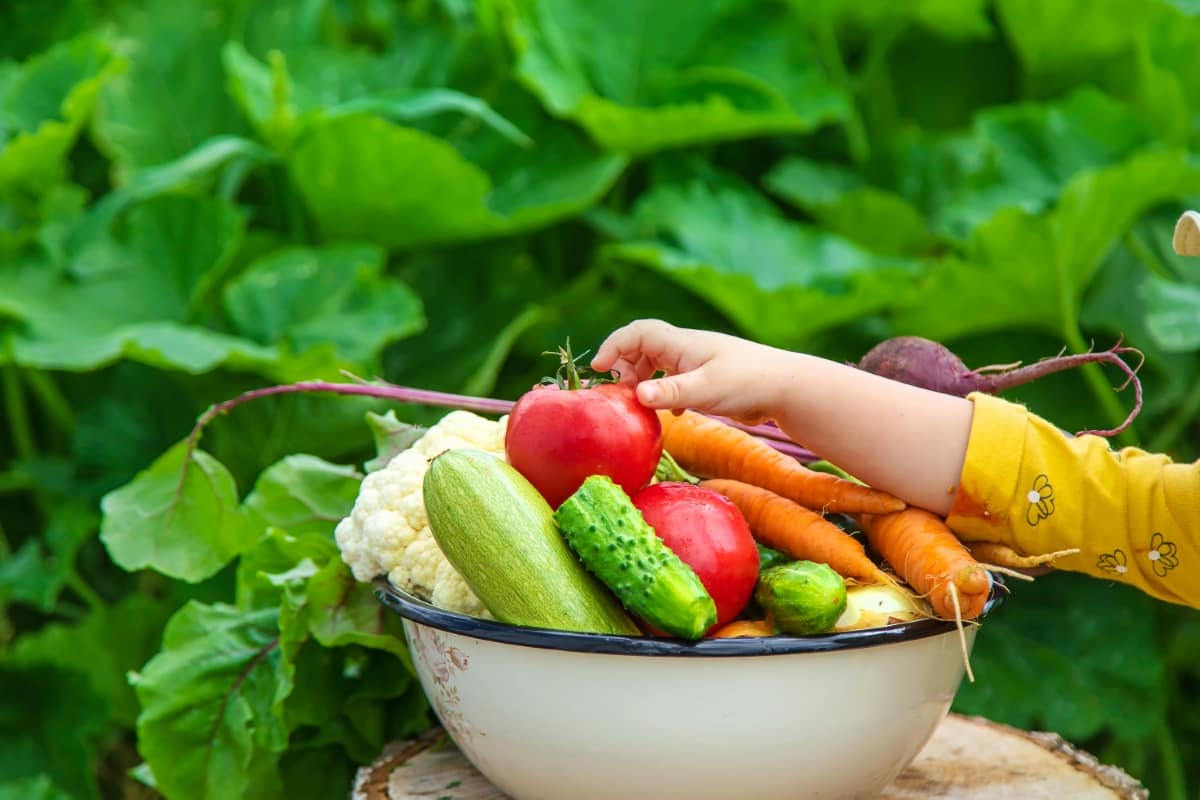Kentucky’s unique blend of rolling hills, scenic bluegrass, and rich history is not just about horse races and bourbon. The state is also a haven for vegetable gardening. This Kentucky vegetable planting calendar can guide anyone considering starting a vegetable garden in Kentucky. With the right information and tools, vegetable gardening in Kentucky can yield a bounty of fresh produce all year round. This vegetable planting guide for Kentucky will dive into the top vegetables to grow in Kentucky, considering the state’s distinct seasons and climatic conditions.

Easy and Best Vegetables to Grow in Kentucky
Choosing the Right Vegetables for Kentucky’s Climate
The Bluegrass state experiences a moderate climate with four distinct seasons. Given the diversity in temperature and precipitation, selecting vegetables well-suited for Kentucky’s varying conditions is crucial. The heart of this lies in understanding the growing season of each vegetable and aligning it with Kentucky’s climate. Regarding vegetable gardening in Kentucky, aligning with the state’s climate ensures a bountiful harvest.
Best Vegetables to Grow in Kentucky During Summer
Summer in Kentucky is typically warm, making it the perfect time to grow heat-loving vegetables. Some of the top vegetables to grow in Kentucky this season include bell peppers, eggplants, okra, and cucumbers. Places like Louisville and Lexington, which experience typical Kentucky summers, can benefit from planting these veggies. These plants love long days and warm nights, making them ideal for Kentucky’s summer months.
Easy-To-Grow Vegetables for Kentucky’s Winter Season
Kentucky winters are relatively mild but can occasionally see snow, especially in the northern parts like Covington. In such conditions, opting for vegetables that can withstand cooler temperatures is vital. Broccoli, Brussels sprouts, and cauliflower are easy-to-grow vegetables during Kentucky’s winter season. Their resilience to frost makes them perfect for ensuring a green garden, even in the colder months.
Spring Planting Guide for Kentucky’s Vegetable Gardens
With spring comes a burst of life and color. As the frost recedes, places like Frankfort and Bowling Green prepare for a new planting season. Vegetables like peas, lettuce, and radishes thrive during this period. Spring’s cool yet growing warmth is the best time to plant these vegetables, ensuring a fresh harvest by early summer.
In case you missed it: Easy and Best Vegetables to Grow in Wisconsin: Planting Guide for Summer, Winter, and Spring

Recommended Varieties of Tomatoes for Kentucky Gardens
Tomatoes are a staple in many gardens, and Kentucky is no exception. For those looking to add this juicy vegetable to their garden, varieties like “Better Boy,” “Celebrity,” and “Early Girl” are great choices. These are particularly resilient to Kentucky’s weather fluctuations and are known for their delicious taste and plumpness.
Leafy Greens and Herbs Ideal for Kentucky’s Growing Conditions
Kentucky’s climate is especially suitable for various leafy greens and herbs. Spinach, kale, and mustard greens love the state’s temperate conditions. For those interested in adding herbs, basil, mint, and rosemary flourish in Kentucky’s soil, adding flavor and fragrance to any garden.
Root Vegetables that Thrive in Kentucky’s Soil
Kentucky’s rich, loamy soil, especially in regions like Paducah, is a blessing for root vegetables. Carrots, beets, and turnips are among the root vegetables that thrive in Kentucky’s soil. Their ability to burrow deep into the ground makes them particularly resistant to weather changes and ensures a bountiful underground harvest.
Managing Pests and Diseases in Kentucky’s Vegetable Gardens
A flourishing garden often attracts unwanted guests. Aphids, beetles, and caterpillars are common pests in Kentucky gardens. Natural methods like neem oil or introducing beneficial insects like ladybugs can help manage these pests. Regular inspection and early intervention are key. As for diseases, it’s essential to maintain proper spacing, avoid waterlogged soil, and practice crop rotation to prevent common diseases like blight and rust.
Kentucky Month-By-Month Vegetable Planting Calendar
| Month | Vegetables to Plant |
| January | Onions, Leeks, Spinach, Collard Greens |
| February | Lettuce, Spinach, Peas, Radishes |
| March | Radishes, Peas, Beets, Turnips, Broccoli, Cabbage |
| April | Carrots, Beets, Swiss Chard, Kale, Kohlrabi, Brussels Sprouts |
| May | Tomatoes, Bell Peppers, Cucumbers, Summer Squash, Zucchini, Corn |
| June | Okra, Eggplants, Green Beans, Lima Beans, Sweet Potatoes |
| July | Pumpkins, Winter Squash, Cauliflower, Broccoli, Chinese Cabbage |
| August | Broccoli, Cauliflower, Lettuce, Spinach, Radishes |
| September | Turnips, Mustard Greens, Kale, Collards, Arugula |
| October | Garlic, Spinach, Lettuce, Asian Greens, Peas |
| November | Collards, Brussels Sprouts, Broad Beans, Shallots |
| December | Asparagus, Onions, Garlic, Rhubarb, Early Peas |
Remember, this table is a general guideline. Depending on specific regions and microclimates within Kentucky, adjustments might be needed.
Extending Your Growing Season with Greenhouses
Kentucky’s temperate climate offers plenty of gardening opportunities, but greenhouses are the way to go for those looking to extend their growing season even further. Greenhouses provide a controlled environment, protecting plants from sudden temperature drops and frost, especially during early spring and late fall.
In case you missed it: Best Vegetables to Grow in Pennsylvania: Planting Guide for Summer, Winter, and Spring Gardening

In places like Owensboro and Ashland, having a greenhouse can mean fresh vegetables almost all year round. With various sizes and types available, gardeners can choose a greenhouse that fits their needs, from small cold frames for seedlings to larger structures for mature plants.
Composting: Enhancing Soil Fertility Naturally
Ensuring nutrient-rich soil is crucial for successful vegetable gardening in Kentucky. Composting serves as an eco-friendly technique that recycles organic waste into a nutrient-dense additive, enhancing the quality of garden soil. By collecting kitchen scraps, yard waste, and even fallen leaves, gardeners can create a compost pile that, over time, breaks down into black gold.
This rich compost can then be mixed into garden beds, giving plants the nutrients they need for robust growth. Not only does this boost plant health, but it also reduces the need for synthetic fertilizers, making gardens more sustainable.
Intercropping and Companion Planting: Maximizing Garden Space and Health
Whether in the sprawling areas of Pikeville or the urban settings of Elizabethtown, Kentucky gardens can benefit from intercropping and companion planting. This technique involves planting different crops near each other based on their complementary growth habits and needs. For example, planting tall corn alongside low-growing beans allows for maximum use of garden space.
Moreover, some plants naturally repel pests that affect their neighbors. Marigolds, for instance, deter nematodes that might affect tomatoes. By understanding the symbiotic relationships between different plants, gardeners can optimize space, reduce pest issues, and even enhance the yield and flavor of their produce.
Watering Techniques for Kentucky’s Climate
Ensuring adequate plant moisture is essential, especially during Kentucky’s hot and dry summer months. While traditional watering methods might suffice, incorporating techniques like drip irrigation can offer numerous benefits. Drip irrigation system efficiently directs water to plant roots, reducing evaporation and optimizing water consumption.
In case you missed it: Best Vegetables to Grow in Colorado: for Summer, Winter, Spring, and Fall Seasons

Especially in drier areas like Hopkinsville, such systems can conserve water and ensure consistent plant moisture, leading to healthier growth and better yields. With Kentucky’s occasional dry spells, adopting efficient watering techniques becomes pivotal in maintaining a flourishing vegetable garden.
Conclusion
With its varied climate and rich soil, Kentucky offers gardeners a unique opportunity to produce a diverse range of vegetables throughout the year. One can turn their garden into a year-round source of fresh, organic produce by aligning with the state’s natural rhythms.
- Feed Your Flock for Less: Top 10 Tips to Save on Chicken Feed
- Ultimate Guide to Ossabaw Island Hog: Breeding, Raising, Diet, and Care
- Hatching Answers: The Top 10 Reasons Your Chickens Aren’t Laying Eggs
- Eggs and Economics: Breaking Down the Cost of Raising Backyard Chickens
- Defend Your Greens: Proven Methods to Keep Iguanas Out of Your Garden
- Ultimate Guide to Cinnamon Queen Chicken: A Comprehensive Guide for Beginners
- Ultimate Guide to California Tan Chicken: Breeding, Raising, Diet, Egg-Production and Care
- Ultimate Guide to Marsh Daisy Chicken: Breeding, Raising, Diet, and Care
- 10 Types of Chicken Farming Businesses You Can Start for Profits